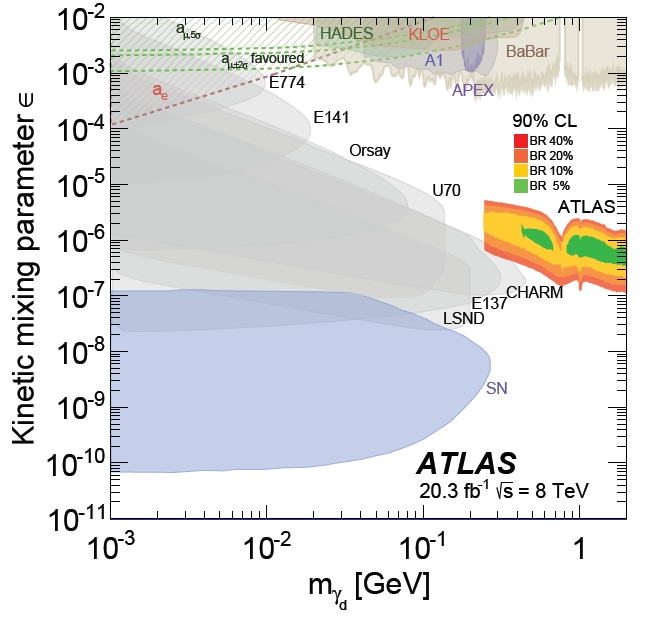If you remember the "ghost muon" saga (see here and links therein for a four-post discussion), the measurement made by CDF in 2008 which hinted at the presence of events with multiple muons within narrow jets, the concept of hidden valley signatures will be more familiar. In the CDF analysis a large excess of these events was observed. The muons in those events had very large impact parameter - much larger than those of typical muons produced in the decay of long-lived hadrons such as B and D mesons (impact parameter is the distance between a back-propagated particle trajectory and the point where the hard collision has taken place). The large impact parameter could only be explained by the decay in flight of a particle with large decay fraction to muons.
We know how the ghost muon story ended: other experiments denied seeing anything similar, and a reexamination of a larger dataset brought CDF to publish a partial retractation, whereby a part of the excess was understood but not all of it; the mystery of the excess of events with many large impact parameter muon candidates thus remained to some extent unsolved, but it is generally believed to have been due to hadron punch-through that the CDF muon chambers were unable to distinguish well enough.
In ATLAS, however, they did search again for lepton jets in their 8 TeV data, as a probe of several models of new physics; their latest result appeared on the Cornell preprint arxiv yesterday. They looked for a rather generic signature of jets made by one or two "dark photons", the neutral long-lived particle with mass in the few GeV range that could decay to displaced electrons, muons, or pions. They saw no excess of data above their background predictions, and came out with two sets of results on the allowed parameter space of a model proposed by my fellow blogger Adam Falkowski and collaborators. The first is an exclusion of the branching fraction of Higgs boson into dark photons as a function of the dark photon lifetime. The second is an exclusion of some region of the parameter space spanned by the mass of the hypothetical dark photon and the "kinetic mixing term" that would tie it to the photon.
The latter result is shown in the busy graph below, which combines the ATLAS exclusion region (with different colours denoting different assumed branching fractions of the Higgs into two dark photons plus anything) with independent search results from other experiments. The sensitive region is not large, but this is a log-log plot which is notoriously deceiving as far as sizing up by eye the relative importance of the various searches. On the horizontal axis is the mass of the dark photon, and on the vertical axis the mixing parameter investigated by the searches.





Comments